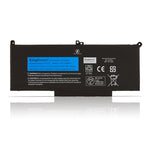You have no items in your shopping cart.
How to fix MacBook sound not working?

The sound on your MacBook can stop working for various reasons. It's hard to tell when your MacBook loses audio, but this article will walk you through the possible causes and fixes.
Why is my MacBook suddenly silent?
There are several reasons why you may not hear sound from your MacBook speakers, but may include the following:
1. An audio device is connected to the computer's port.
2. The sound of the computer is muted.
3. The computer's speakers are not selected as the output device.
4. The computer does not start normally.
5. You need to reset the PRAM or NVRAM.
6. Your computer's operating system needs to be updated.
How to fix sound on MacBook?
The following solutions can get your MacBook's sound working again, ranging from the simplest to the most complex. Try them to see if the audio returns.
Step 1: Unplug any external devices connected to your MacBook.
Headphones, speakers, and other devices can block audio from your MacBook's speakers. Disconnect them to see if the sound returns.
Step 2: Turn off Bluetooth.
In addition to hardwired devices, you can also connect speakers or headphones wirelessly. Click the Bluetooth icon at the top of the screen and toggle the switch to off. This method is simpler than checking for connected devices and then disconnecting them; it works just as well if that's the problem.
Step 3: Make sure your voice is not muted.
Press the volume adjustment buttons on the keyboard, including mute, or check the volume slider at the top of the screen.
Step 4: Check your sound preferences.
Open System Preferences and go to Sound - Output. Under Select sound output device, click MacBook Speakers, MacBook Pro Speakers, or MacBook Air Speakers, depending on your laptop type.
At the bottom of this window, ensure the Mute checkbox is not selected.

KingSener 99.5Whr A1618 Battery For Apple MacBook Pro 15 inch Retina A1398 2015 Year 020-00079 MJLQ2LL/A MJLT2LL/A
Step 5: Check to see if macOS needs an update.
Sounds not working correctly on MacBook may be a bug in the current macOS version.
Open System Preferences and click Software Update. Your computer will check for available updates and prompt you to do so.
NOTE:Before updating macOS, make sure to back up your MacBook.
Step 6: Restart your MacBook.
It may be that your MacBook did not correctly initialize the sound driver when it started up. Rebooting gives it another chance to start everything correctly - select Reboot from the Apple menu in the upper left corner of the screen.
Step 7: Reset NVRAM.
Depending on your MacBook type, it may use non-volatile RAM (NVRAM) to store specific settings. Like any other memory, it also benefits from occasional resets.
What you will reset depends on your processor: if you have an Intel Mac, reset the NVRAM by shutting down the computer and restarting it while holding down Command + Option + P + R.
If your MacBook has an M1 or later chip, it still uses NVRAM, but you can't reset it using this method. A graceful restart should take care of it automatically.
Step 8: Contact Apple.
If your MacBook's sound still doesn't work, it may need service. You can take it to an Apple Store or an authorized repair facility, either of which should be able to diagnose and fix the problem.
If this article still doesn't help your laptop battery, you can buy a new battery at BatteryMall.com.
If you want to learn more about batteries, please visit:BatteryMall.com/blogs/support








